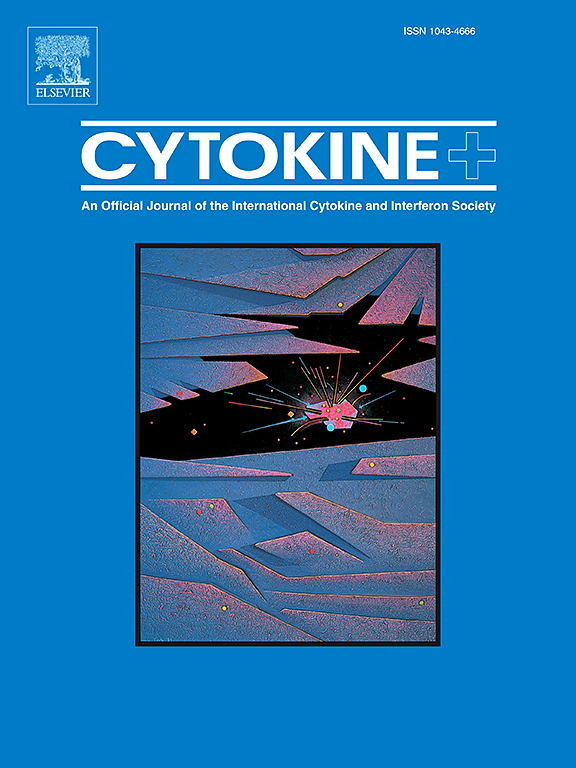SAA1通过FOXO3a磷酸化调控真菌性角膜炎免疫炎症通路的关键介质
IF 3.7
3区 医学
Q2 BIOCHEMISTRY & MOLECULAR BIOLOGY
引用次数: 0
摘要
目的真菌性角膜炎是一种严重的眼部感染,其潜在的分子机制尚不完全清楚。本研究旨在利用生物信息学和体外实验鉴定和研究与FK发病机制相关的免疫炎症反应相关的关键基因。方法利用limma软件包分析GEO数据库(GSE58291)的转录组学数据,鉴定差异表达基因(deg)。通过基因本体(GO)和京都基因与基因组百科全书(KEGG)富集分析来评估与DEGs相关的重要生物过程和途径。加权基因共表达网络分析(WGCNA)确定了与fk相关的deg相关的基因模块,维恩图分析突出了核心基因。受试者工作特征(ROC)分析评估诊断潜力。采用CIBERSORT分析免疫细胞组成,评价关键基因与免疫细胞的相关性。体外用烟曲霉(Aspergillus fumigatus, A.F.)刺激人角膜上皮细胞(HCEC),采用酶联免疫吸附法(ELISA)检测促炎细胞因子(IL-1β、TNF-α、IL-6)的表达。Western blot和定量实时聚合酶链反应(RT-qPCR)分析转染saa1 siRNA后FOXO3a磷酸化和基因表达变化。结果共鉴定出101个基因,WGCNA共表达了6个共表达网络模块,其中黄色和黑色模块具有显著相关性。在deg和模块中鉴定出9个共享基因,其中SAA1与FK发病机制密切相关。SAA1表达与中性粒细胞、T细胞CD4记忆活化、T细胞γ δ和肥大细胞活化呈正相关。A.F刺激后,细胞因子表达增加,在24 h达到峰值。SAA1的抑制降低了FOXO3a磷酸化和促炎细胞因子水平,强调SAA1通过FOXO3a调节在FK炎症中的作用。结论saa1是FK的关键基因,通过调节FOXO3a磷酸化促进炎症反应。这突出了其作为治疗fk相关炎症的治疗靶点的潜力。本文章由计算机程序翻译,如有差异,请以英文原文为准。

SAA1 as a key mediator of immune inflammatory pathways in fungal keratitis through FOXO3a phosphorylation regulation
Objective
Fungal keratitis (FK) is a severe ocular infection, with its underlying molecular mechanisms remaining incompletely understood. This study aimed to identify and investigate key genes involved in immune-inflammatory responses associated with FK pathogenesis using bioinformatics and in vitro assays.
Methods
Transcriptomic data from the Gene Expression Omnibus (GEO) database (GSE58291) were analyzed using the limma package to identify differentially expressed genes (DEGs). Gene Ontology (GO) and Kyoto Encyclopedia of Genes and Genomes (KEGG) enrichment analyses were performed to evaluate significant biological processes and pathways related to DEGs. Weighted gene co-expression network analysis (WGCNA) identified gene modules linked with FK-associated DEGs, and Venn diagram analysis highlighted core genes. Receiver operating characteristic (ROC) analysis assessed diagnostic potential. Immune cell composition was analyzed using CIBERSORT, and correlations between key genes and immune cells were evaluated. In vitro, human corneal epithelial cells (HCEC) were stimulated with Aspergillus fumigatus (A.F.), and pro-inflammatory cytokine expression (IL-1β, TNF-α, IL-6) was assessed using enzyme-linked immunosorbent assay (ELISA). Western blot and quantitative real-time polymerase chain reaction (RT-qPCR) analyzed FOXO3a phosphorylation and gene expression changes post-SAA1 siRNA transfection.
Results
A total of 101 DEGs were identified, with WGCNA revealing 6 co-expression network modules, with significant associations noted in yellow and black modules. Nine shared genes were identified in DEGs and modules, with SAA1 strongly linked to FK pathogenesis. SAA1 expression was positively correlated with neutrophils, T cells CD4 memory activated, T cells gamma delta, and activated mast cells. Upon stimulation with A.F., cytokine expression increased, peaking at 24 h. Inhibition of SAA1 reduced FOXO3a phosphorylation and pro-inflammatory cytokine levels, underscoring SAA1's role in FK inflammation via FOXO3a regulation.
Conclusion
SAA1 is a key gene in FK, promoting inflammation by modulating FOXO3a phosphorylation. This highlights its potential as a therapeutic target in managing FK-related inflammation.
求助全文
通过发布文献求助,成功后即可免费获取论文全文。
去求助
来源期刊

Cytokine
医学-免疫学
CiteScore
7.60
自引率
2.60%
发文量
262
审稿时长
48 days
期刊介绍:
The journal Cytokine has an open access mirror journal Cytokine: X, sharing the same aims and scope, editorial team, submission system and rigorous peer review.
* Devoted exclusively to the study of the molecular biology, genetics, biochemistry, immunology, genome-wide association studies, pathobiology, diagnostic and clinical applications of all known interleukins, hematopoietic factors, growth factors, cytotoxins, interferons, new cytokines, and chemokines, Cytokine provides comprehensive coverage of cytokines and their mechanisms of actions, 12 times a year by publishing original high quality refereed scientific papers from prominent investigators in both the academic and industrial sectors.
We will publish 3 major types of manuscripts:
1) Original manuscripts describing research results.
2) Basic and clinical reviews describing cytokine actions and regulation.
3) Short commentaries/perspectives on recently published aspects of cytokines, pathogenesis and clinical results.
 求助内容:
求助内容: 应助结果提醒方式:
应助结果提醒方式:


